Hook Grip: Types, Benefits and How to Do
Author:
Reviewed by:
(21 years of Oly Lifting experience)
Unlock your full potential by engaging with our experts and community! Have questions about your fitness journey or looking for expert advice on weightlifting techniques? Don’t hesitate — leave a comment below and Sergii Putsov will provide a personalized answer and insights to help you reach your goals.
Torokhtiy is reader-supported. Some links are affiliate links, and we may earn a commission at no extra cost to you. See our disclosure page for details.
Are you looking to perfect your lifting technique? Dive into our comprehensive guide on the hook grip – a game-changer in strength training and Olympic weightlifting. We’ll demystify this grip’s mechanics, advantages, challenges, and crucial role in enhancing your performance and safety. Welcome to your next level of strength training!
The hook grip is an Olympic weightlifting technique where the lifter places their thumb between the barbell and fingers for a secure grip. It enhances grip strength and control during heavy lifts like the clean and snatch.
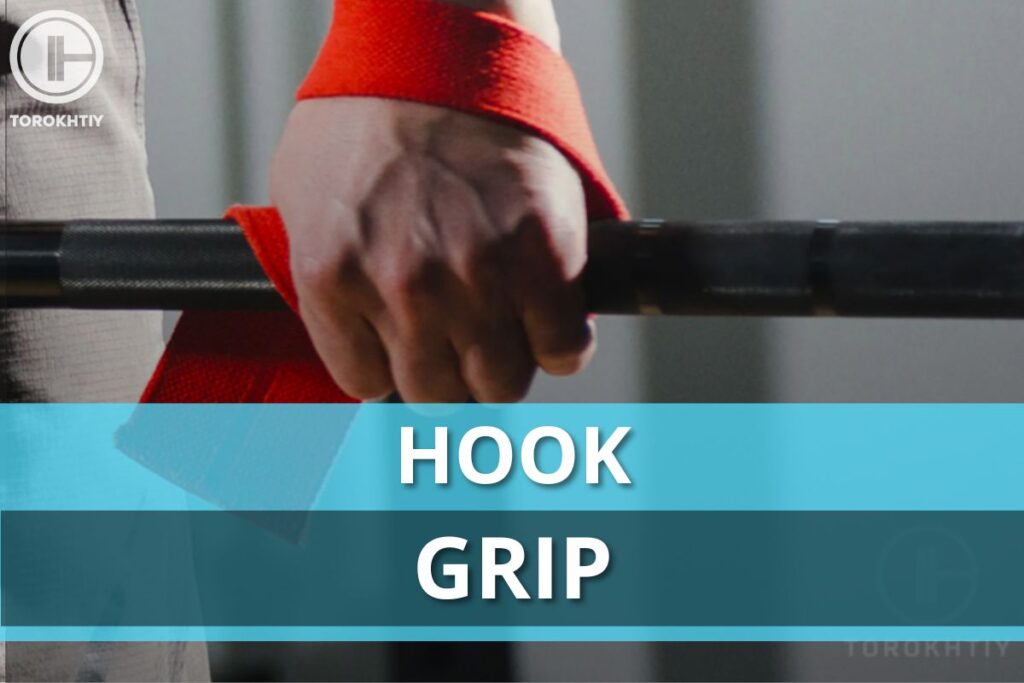
What Is Hook Grip
According to weightlifting textbooks, the hook grip in Olympic weightlifting involves a pronated hand position with the thumb positioned between the barbell and the pointer and middle fingers. Its primary function is to ensure control of the barbell during the snatch and clean exercises.
A critical aspect of the hook grip is concealed: the thumb not only presses against the barbell inside the grip but also encompasses it. This is what distinguishes a hook grip from a regular grip, where the thumb sits atop the remaining fingers.
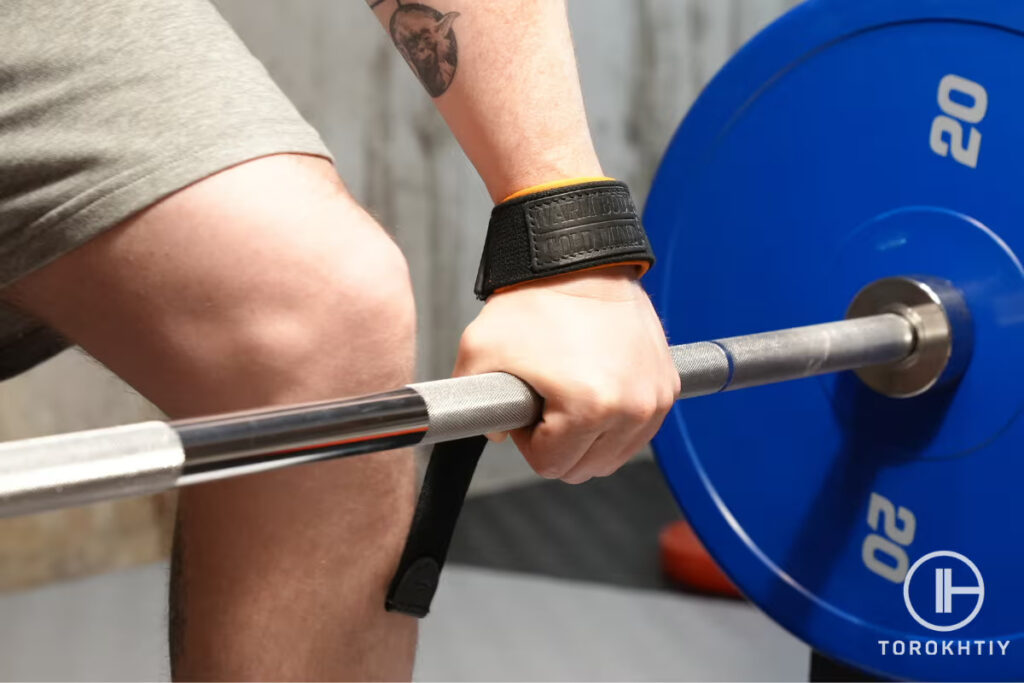
So how to do hook grip? As the athlete’s fingers curl over their thumb from above, it’s essential that they also tightly clasp the barbell. This nuance is of utmost importance: the fingers aren’t merely exerting pressure on the thumb, but also ENVELOPING it. I’m deliberately reiterating this, as rookies tend to commit this mistake, leading to the prevalent perception that the hook grip is pointless, uncomfortable, and untrustworthy.
Hook Grip Advantages
The hook grip offers several advantages for strength training, fitness and Olympic weightlifting, providing benefits that extend beyond a more secure grip. These advantages can have a meaningful impact on both performance and safety.
1. Enhanced Grip Security
In the weightlifting hook grip, the thumb is wrapped around the barbell, followed by the fingers wrapping around the thumb. This creates a secure and strong grip that is less likely to slip, especially when lifting heavy weights. In exercises like deadlifts, cleans, or snatches, where a lifter’s grip strength can be the limiting factor in the amount of weight they can lift, the hook grip can be the difference between a successful lift and a missed one. This added security is vital not just for performance, but also for safety, as losing grip on a heavy barbell can lead to injury.
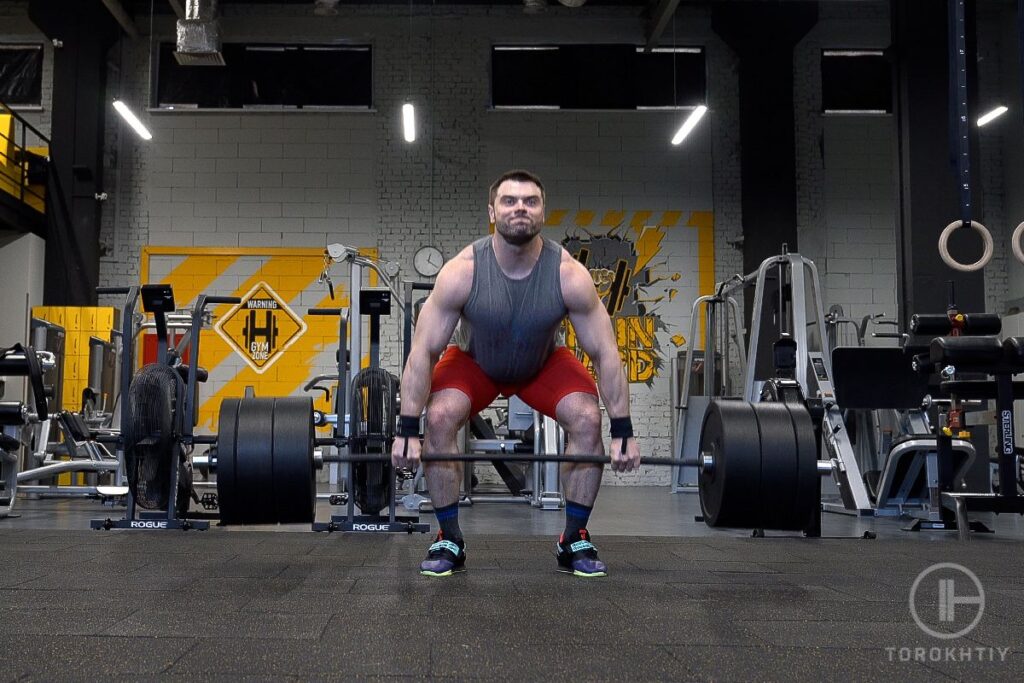
2. Prevents Bar Roll
During heavy lifts, the barbell can start to roll out of the lifter’s hand, which can compromise the lift and potentially lead to injury. This is a significant issue in exercises like the hook grip deadlift, where the bar is pulled off the ground and the tendency for the bar to roll is greater. The hook grip counters this by effectively locking the bar in place, preventing it from rolling and providing a more stable lift.
3. Facilitates Quicker Lifts
In Olympic weightlifting, the speed at which you can move the barbell is often just as important as the amount of weight you can lift. The hook grip can help lifters move more quickly under the bar during the snatch and the clean & jerk exercises. This is because the hook grip allows for a more efficient transfer of power from the lifter to the bar.
4. Reduces Forearm Fatigue & Tightness
A significant benefit of the barbell hook grip is that it reduces the strain on the forearm muscles. In exercises like the deadlift or snatch and clean variations, where the forearms are heavily involved, fatigue can set in quickly, limiting the effectiveness of the workout. By using the hook grip in fitness, lifters can maintain their grip strength over a longer period, allowing for more reps or a higher weight to be lifted before fatigue sets in. This also means less tightness and strain in the forearms post-workout, aiding recovery and reducing the risk of overuse injuries.
5. Promotes Better Bar Control
A significant benefit of the barbell hook grip is that it reduces the strain on the forearm muscles. In exercises like the deadlift or snatch and clean variations, where the forearms are heavily involved, fatigue can set in quickly, limiting the effectiveness of the workout. By using the hook grip in fitness, lifters can maintain their grip strength over a longer period, allowing for more reps or a higher weight to be lifted before fatigue sets in. This also means less tightness and strain in the forearms post-workout, aiding recovery and reducing the risk of overuse injuries.

The Main Problems With The Hook Grip
Many novices find mastering the hookgrip challenging, particularly young athletes or those in lighter weight categories who stand under 165 cm. The primary reason why every weightlifter globally employs the hookgrip is due to the freedom it offers arm muscles, notably the forearms, during a power position in a snatch or clean.
For those fretting about having too short palms and fingers, take inspiration from Halil Mutlu, the three-time Olympic weightlifting champion, who snatched 138 kg at a body weight of 56 kg and height of 150 cm using the hookgrip.
What’s crucial to bear in mind while executing the hookgrip? When prepping for a snatch or clean, make sure to drive the gap between your thumb and index finger into the barbell, then clutch it first with the thumb, followed by the other fingers. This enhances your grip on the barbell.
The correct finger sequence is key: begin by holding the bar with your thumb, then pinch your thumb with the other two fingers and rotate it a bit more around the bar.
Athletes with larger hands can even envelop their thumb with three fingers, whereas lightweight athletes may only use their index fingers, sometimes letting their thumbnail grow as a “secret trick.”
The best way to acclimate to the hookgrip is consistent use when lifting the barbell. Over time, your wrists will adjust, making the hookgrip feel natural and perfectly comfortable.
A frequently asked question is: should the wrist always maintain the hookgrip? My response is that the hookgrip is crucial from the moment the bar lifts off the platform until the power position concludes. Afterward, most athletes release the hookgrip and hold the barbell with a simple grip.
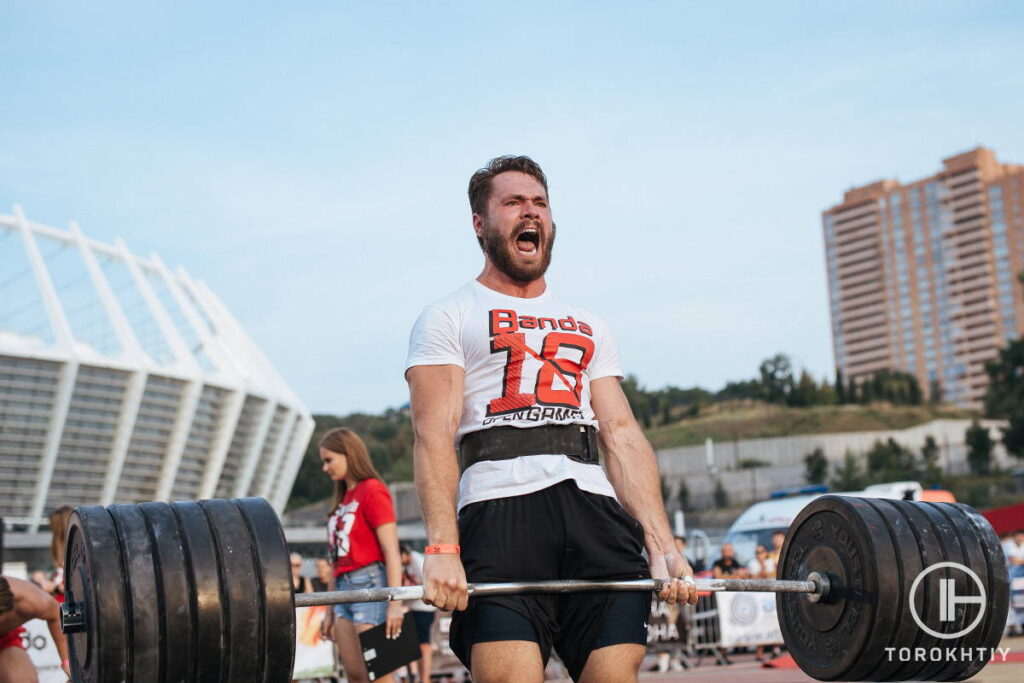
I urge athletes to continually focus on improving flexibility and hand (particularly thumb) mobility. One technique, whimsically termed “girl kick”, involves clenching the fingers into a fist with the thumb inside, and flexing the wrist towards the elbow, away from the thumb. This creates a stretch at the thumb base and slightly at the wrist. Flexing your wrist in this position provides additional, slightly varied stretching.
A great way to fortify the hookgrip is by juggling discs. Incorporate this exercise into your routine several times a week post-workout.
Start with 5 kg discs, performing 2-3 sets of 8-12 repetitions, first one-handed then with both hands simultaneously for coordination.
I also suggest using lifting thumb tape to wrap your thumbs. It’s essential to choose a soft thumb tape that allows your joints to move freely. The tape enhances your connection with the barbell, increasing your sense of security.
Follow us!

Free!
Get a 2-week Weightlifting Program as a bonus for the subscription to kickstart your training plan!

Free!
Why It Is Important To Perform The Hook Grip Correctly
Using the hook grip in Olympic weightlifting can be highly beneficial, but several common mistakes can limit its effectiveness or even lead to injury.
1. Incorrect Thumb Position
The thumb should be placed under the index and middle fingers. Some lifters mistakenly place the thumb above or beside the fingers, which reduces grip strength and control.
2. Not Gripping Tightly Enough
A loose hook grip can lead to the barbell rolling out of the hand. It’s crucial to ensure that the grip is tight and secure, with the thumb and fingers fully wrapped around the bar.
3. Ignoring Discomfort or Pain
While the hook grip can initially be uncomfortable, persistent pain may indicate a problem. Ignoring this can lead to injuries. It’s important to gradually acclimate the hands to the grip and consider using tape to reduce discomfort.
4. Not Releasing the Hook Grip
In some lifts, such as the clean, it’s recommended to release the hook grip when the bar is received in the rack position. Not doing so can limit the lifter’s ability to adjust their grip or position if needed.
5. Neglecting Hand Care
Regular use of the hook grip can be hard on the hands, especially the thumb. Neglecting to take care of your hands, like moisturizing and managing calluses, can make using the hook grip more uncomfortable and even lead to skin tears.
6. Not Practicing Enough
The hook grip can feel awkward initially and it takes time to get used to. Some lifters give up too soon, instead of consistently practicing it and allowing their hands to adjust.
7. Failing to Strengthen the Grip
While the hook grip does reduce the demand on the forearm muscles, having a strong grip is still important. Neglecting grip strength training can limit the effectiveness of the hook grip.

Differences In The Grip In Different Types Of Strength Exercises
Three primary grip styles exist in strength training: the pronated (or overhand) grip, the alternated (or mixed) grip, and the hook grip. Athletes select the most suitable type based on their specific strength training style and focus.
1. The Pronated Grip
The pronated grip, also known as the overhand grip, is a common grip used in strength training. In this grip, the palms face towards the body and the knuckles face outward or upward, depending on the exercise. For example, if you were holding a barbell for a deadlift, your palms would be facing your body, and your knuckles would be facing forward, away from you. This grip is often used in pull-ups, rows, and deadlifts, among other exercises.
One advantage of the pronated grip is that it can engage more of the muscles in your back and biceps during pulling movements, compared to other grips. However, grip strength can sometimes be a limiting factor in lifts, especially when lifting heavier weights.
2. The Alternated Grip
The alternated grip, also known as the mixed grip, is a type of grip used in strength training where one hand uses a pronated (overhand) grip while the other hand uses a supinated (underhand) grip. In this grip, one palm faces towards the body and the other palm faces away from the body.
The mixed grip is commonly used in exercises like deadlifts, where grip strength can be a limiting factor. The main advantage of using the mixed grip is that it helps prevent the barbell from rolling out of the lifter’s hands. Since the palms face in opposite directions, any rolling motion in one hand is counteracted by the other hand, making it easier to maintain a secure grip on the bar.
However, there are some potential drawbacks to using the alternated grip. It can lead to imbalances in muscle development if the grip is not switched regularly between hands. Additionally, there is a slightly increased risk of biceps injury in the supinated arm due to uneven loading and torque.
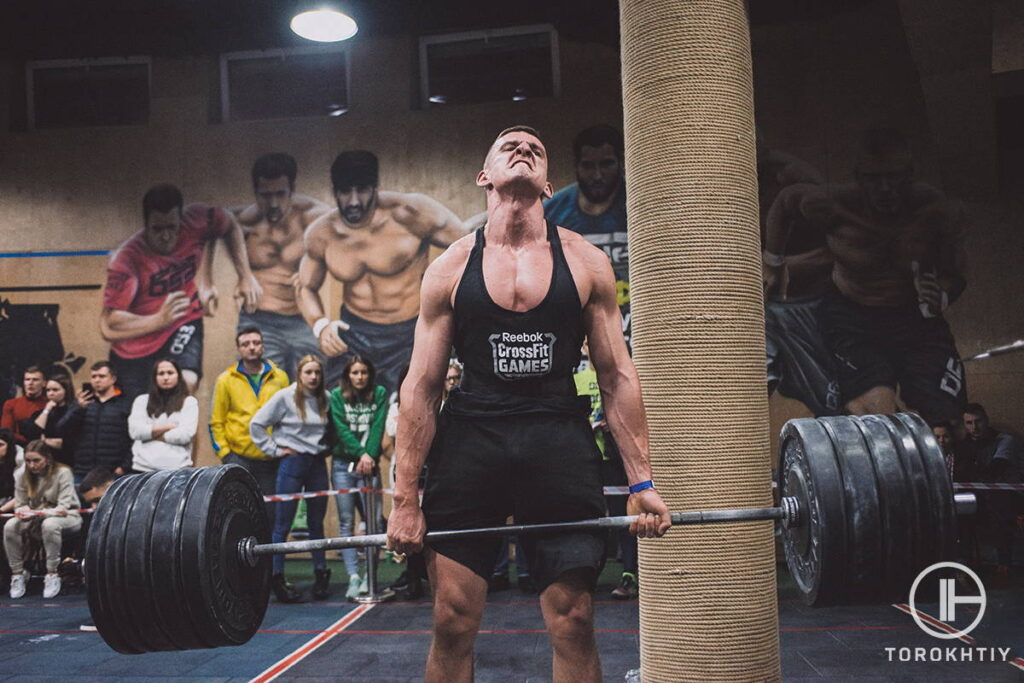
Hook Grip vs Regular Grip
Based on the above the hook grip and regular grip are two fundamental techniques used in weightlifting. The hook grip, where the thumb is wrapped around the barbell and the fingers around the thumb, provides enhanced security and prevents the bar from rolling during heavy lifts. It’s preferred for Olympic lifts such as the snatch and clean & jerk, despite initial discomfort due to the pressure on the thumb.
Regular grip is common in general strength training. While easier to master, it may not provide the same level of security, especially during heavy lifts, and can lead to uneven muscle development or potential injury in the mixed variant. Both grips have their place, but for those serious about weightlifting, mastering the hook grip, despite initial discomfort, can lead to improved performance and safety.
FAQ
Can Everyone Do Hook Grip?
Yes, most individuals can adopt the hook grip for strength training and Olympic weightlifting, but it may not be comfortable or effective for everyone. Factors such as hand size, thumb length, flexibility, and pain tolerance can influence one’s ability to effectively use the hook grip. Some individuals, especially those with smaller hands or shorter thumbs, may find the hook grip challenging or uncomfortable.
Is Hook Grip Safe?
Yes, the hook grip is generally safe when used correctly. It enhances grip security, prevents barbell roll. However, it can be uncomfortable initially and, if used improperly, may lead to thumb strain. Proper practice, hand care, and gradual adaptation are recommended for safe use.
Is Hook Grip Painful?
The hook grip can initially be uncomfortable or even painful, especially for beginners. This is due to the increased pressure on the thumb. However, with consistent use and proper hand care, most athletes adapt over time and the discomfort significantly decreases or even disappears.
Conclusion
In essence, the hook grip, although initially uncomfortable, can greatly enhance weightlifting performance and safety. Proper practice and hand care are key. Its benefits, from grip security to forearm fatigue reduction, make it a technique worth mastering.
Join the conversation below with your questions or experiences. Let’s grow together in weightlifting!
Also read:
- Functional Fitness Vs Weightlifting
- Olympic Weightlifting Benefits
- Strength Training Benefits for Women
- How to Start Weight Lifting as a Women
- What Age Should You Start Lifting Weights
- Weightlifting Meal Plan
- Bulgarian Method
- 4 Day Olympic Weightlifting Program
- 3 Day a Week Olympic Weightlifting Program
Why Trust Us?
With over 20 years in Olympic weightlifting, strength training, nutrition coaching, and general fitness our team does its best to provide the audience with ultimate support and meet the needs and requirements of advanced athletes and professional lifters, as well as people who strive to open new opportunities and develop their physical capabilities with us.
By trusting the recommendations of our certified experts in coaching, nutrition, and sports training programming, as well as scientific consultants, and physiotherapists, we provide you with thorough, well-considered, and scientifically proven content. All the information given in the articles concerning workout programming, separate exercises, and athletic performance, in general, is based on verified data.
The product testing process is described in more detail here.
Author: Sergii Putsov
Head of Sport Science, PhD
Best Results: Snatch – 165 kg,
C&J – 200 kg
Sergii Putsov, Ph.D., is a former professional weightlifter and National team member, achieving multiple medals in the 94 kg weight category at national competitions. With a Master’s degree in “Olympic & Professional Sport Training” and a Sport Science Ph.D. from the International Olympic Academy, Greece, Sergii now leads as the Head of Sport Science. He specializes in designing training programs, writing insightful blog articles, providing live commentary at international weightlifting events, and conducting educational seminars worldwide alongside Olympic weightlifting expert Oleksiy Torokhtiy.
Reviewed by: Oleksiy Torokhtiy
Olympic Weightlifting Champion
Best Results: Snatch – 200 kg,
C&J – 240 kg
Oleksiy Torokhtiy is a professional athlete boasting 20 years of experience in Olympic weightlifting. With multiple European and World titles under his belt, he has showcased his prowess in two Olympic Games (Beijing 2008 and London 2012). Upon concluding his illustrious career, Oleksiy dedicated himself to coaching. By 2022, he had conducted over 200 weightlifting seminars worldwide. He is the visionary behind an international sportswear and accessories brand known for its motto, “Warm Body Cold Mind.” Additionally, he is an esteemed author and the creator of a series of training programs and eBooks.





Still have questions after reading our article? Unlock your full potential by engaging with our experts and community! Don’t hesitate — leave a comment below and Sergii Putsov will provide a personalized answer and insights to help you reach your goals.